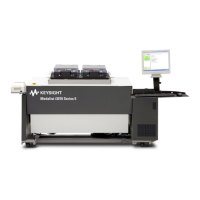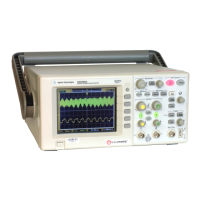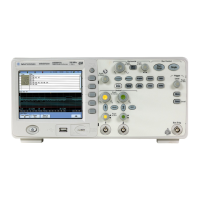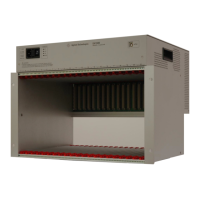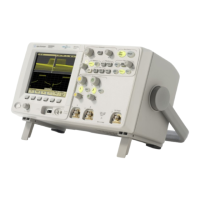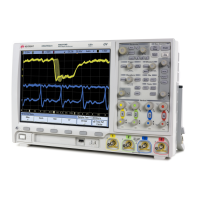© Agilent Technologies 2001–2003 Agilent 3070 System Installation Manual (MS Windows Version) 1-36
Chapter 1: MS Windows System Installation Procedure: Verifying the Vacuum Subsystem
Verifying the
Vacuum Subsystem
This section contains:
■ Introduction, 1-36
■ Install the Vacuum Manifold, 1-36
■ Connect the Compressed Air, 1-36
■ Check the Vacuum Actuation System, 1-36
■ Troubleshooting, 1-37
Introduction
The 327X (one-module) testhead has at least one
internal vacuum solenoid. The second internal solenoid
is optional.
It is the customer's responsibility to connect external
vacuum solenoid control wires to the System Card if
external solenoids are used.
See Figure 1-15 on page 1-38 to reference internal
vacuum solenoids in a 4-module testhead.
Install the Vacuum Manifold
• Install the vacuum manifold on the vacuum ports
located toward the rear of the testhead,
•See Figure 1-8 on page 1-25 for the vacuum port
locations.
Connect the Compressed Air
• A male-quick-disconnect air fitting is installed on the
rear of the testhead to connect to the compressed air
supply,
• If the customer's compressed air hose has the oppo-
site fitting to mate with the testhead fitting, install the
included female quick-disconnect fitting.
Check the Vacuum Actuation System
NOTE
See “Vacuum Control Specifics” in Chapter 2 for
more information.
1 If a vacuum source is connected and the solenoid(s)
are wired, turn the vacuum on and off and listen for
the sound of solenoids operating:
a Install and lock-down a fixture.
b Open a BT-BASIC window.
One way is to double-click the BT-BASIC desktop
icon.
c At the BT-BASIC window prompt, enter:
1) testhead is 1
2) vacuum well a is <m>
where <m> = a valid module vacuum port
(where the vacuum manifold or external
vacuum hoses are connected).
